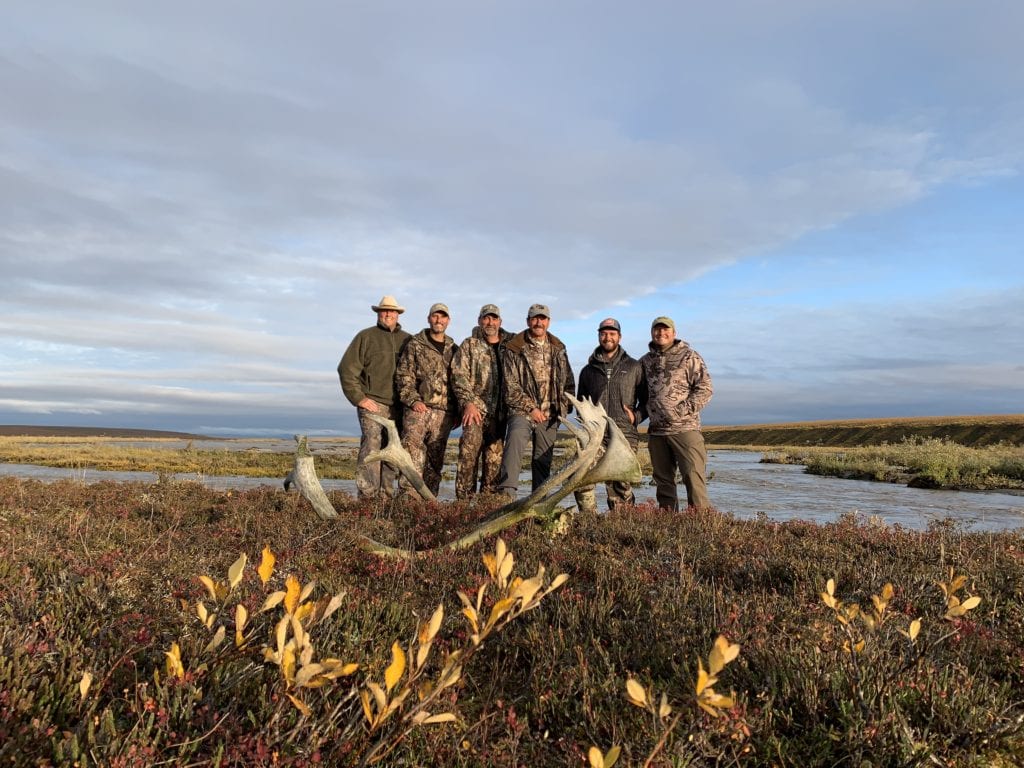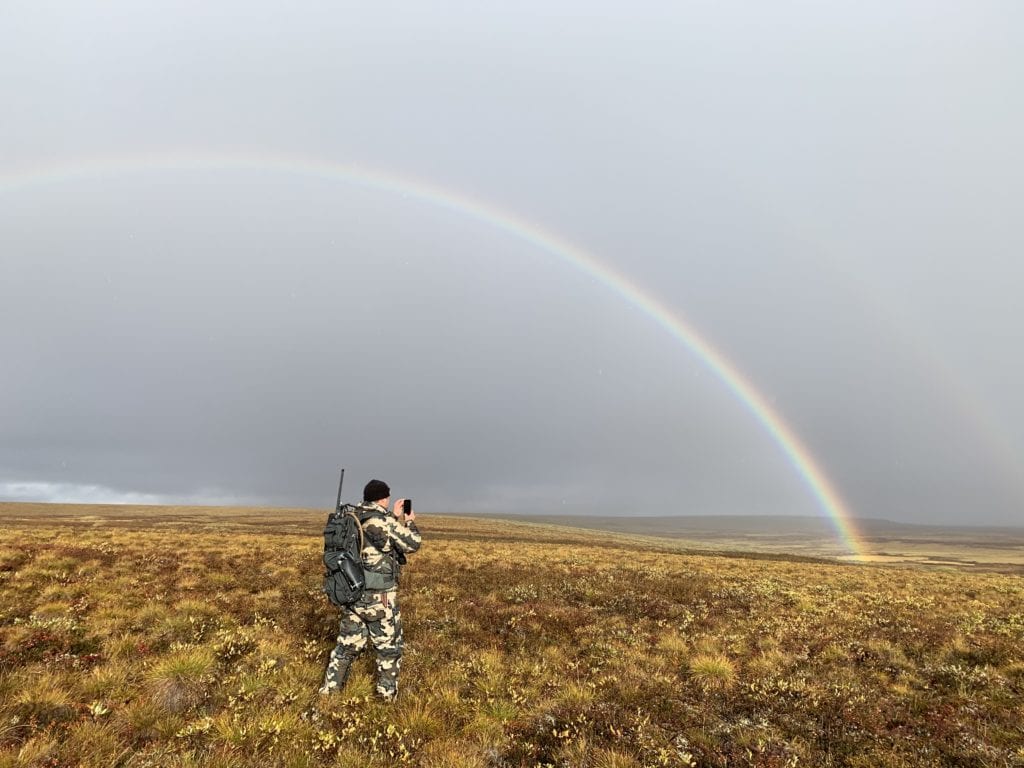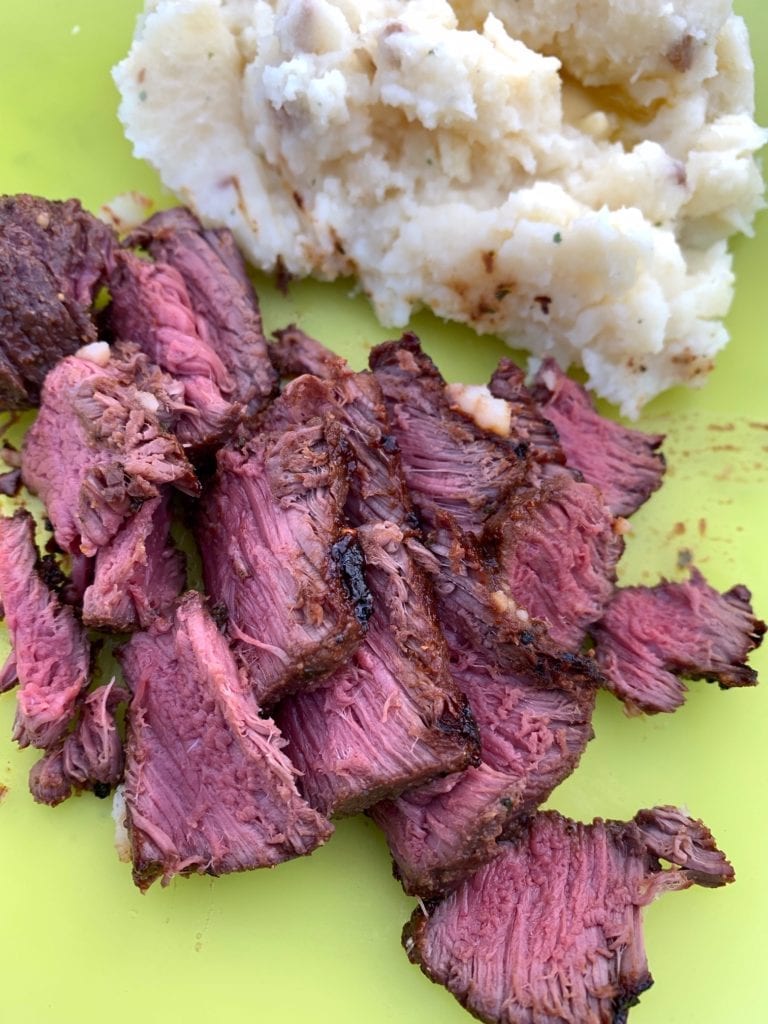Alaska DIY caribou hunt
By David J. Sams, Lone Star Outdoor News

At a hunting show in San Antonio last year, two friends walked the aisles looking for an adventure.
The pair wanted to give caribou hunting a try, and Deadhorse Outfitters, in its first year of business, was offering a half-price show special to bring some attention to the do-it-yourself Alaskan caribou hunts.
Jeremy Conn and friends operate the new veteran-owned business, and wanted to provide affordable hunts for people since it’s so expensive to hunt in Alaska.
The price of $2,800 was cut to $1,500 for each hunter for an eight-day trip that included all the camping gear required.
A group of six hunters with San Antonio roots was put together, and the group headed north in late August, flying into Prudhoe Bay and spending the first night at the Brook Camp, a hotel for oilfield workers.
The camp, with small rooms and separate bathrooms, was nice; and, even better, on the way back you could take a shower, eat and do your laundry for $28.
The next morning, after a one hour, 10 minute drive on the “Haul Road,” the group reached a boat ramp on the Sag River.
After sorting gear and loading up, Jeff “Hook” Callison drove us upriver for about an hour in his airboat.
The outfitters are transporters, not guides, and drop you off at an area to camp. Once you unload your stuff, the airboat is off to pick up other hunters. Hook said, “Good luck, we’ll see you next Friday.”
The drop camps are located off the Echooka, and Ivishak rivers located in Unit 26B, North Slope Alaska.

It started raining, sleeting and snowing as we set up camp. Luckily, we had rented an extra tent so we had two men per tent. The brand new Alaskan Guide tents had plenty of extra room — nice for spending seven days in the rain on the tundra. The cots and Heater Buddy’s were also a nice addition.
By midafternoon, the team was set up and quickly learned how difficult it is to walk on the tundra. Think of duct taping five sponges to the bottom of your feet, then standing in the water, then trying to walk.
At higher elevations, the grass was 6 inches high in clumps, making it necessary to go around each one, as the team learned if you step onto one, you were certain to fall off.
The group fanned out and identified different points and landmarks to be able to communicate locations via radio. Spots like “the deer feeder” (not a real feeder), and “the hill” and also marked easy water crossings with flagging.
The scenery was beautiful when the clouds broke, which wasn’t often. The Brooks Range, some 40 miles away, was topped with snow at first. When the snow disappeared, the river came up 7 feet and flooded. Several other camps had to move farther from the water, but ours had about 3 feet to go when the water began to recede.
The days were spent hiking out, usually in the rain, reaching an area where you could see more area, glassing and waiting.
Canada geese were flying everywhere, and landing to feed on blueberries. Specklebellies were teaching their young aerial maneuvers. The caribou, though, were few and far between.
On the second day at 7:30 p.m., a group of caribou bulls was spotted across the river, and three came down, moving fast and heading north. There was no way to catch up to them.
The third day, only a cow and two calves were seen. The fourth and fifth days, nothing.
Finally, a cow and young bull were seen more than a mile away and a hunter slogged to within 480 yards and took the bull for camp meat. The pack-out took two hours with four guys carrying the meat back to camp. Within 30 minutes of arriving at camp, caribou tenderloin sautéed in butter was warming up the campers and lifting everyone’s dreary spirits.
Cooking became the highlight of the trip, since it was raining so much. Dead- horse provided two MREs (Meals Ready to Eat) per day, and we brought extra food in an ice chest. The last night, we ate caribou carne guisada and a whole stack of tortillas. The river being so high made fishing difficult, but one Arctic grayling was caught and eaten. Meals were improvised, including pancakes with tundra blueberries. You’ll need to keep a boiling pot of water going. It’s like your microwave, especially if you want warm syrup and butter. Water was no problem, as everyone drank from the streams without any issues.

A cozy campfire each night is a pipe dream. There is very little driftwood around, but we found enough and put it under a tarp for five days of drying to finally provide a decent fire on the last night.
The last day of the hunt, everyone ventured farther out. Caribou were spotted, but they were either hours away on foot or across the river. Finally, a group of 18 was seen, including several younger bulls, but they were two hours away and darkness was approaching.
Estimating distance is difficult on the featureless tundra. A hunter looking through a spotting scope thought the caribou were much closer, but with the day winding down, there was no time for a chase.
One other group of hunters on our river fared better. Having seen no animals, three bulls were finally spotted, and the hunters bagged all three and took two more days to pack them out. Another Texas couple hunted after us and both shot young caribou and caught Arctic char and grayling and said the trip was everything they dreamed it would be.
Was the show special worth it? Yes.
There were a few negatives. Boats were running up and down the river each day, bringing an obnoxious interruption to the serenity each time. The camps were close enough that moving really wasn’t an option and seeing other hunters was not in our plans.
But, it’s a chance to kill a caribou at a good cost and in a good place. You can’t control the weather or the movement of the animals, but the equipment is top-notch.
The trip should be considered more about meat hunting than trophies. We learned the temperatures had been unusually high, and the Porcupine caribou herd wasn’t mi- grating and would likely move into the area later.
While flying back over the Alaskan tundra, I was disappointed I never loaded a cartridge into the chamber the whole trip. But it still left me with a burning desire to go back.


